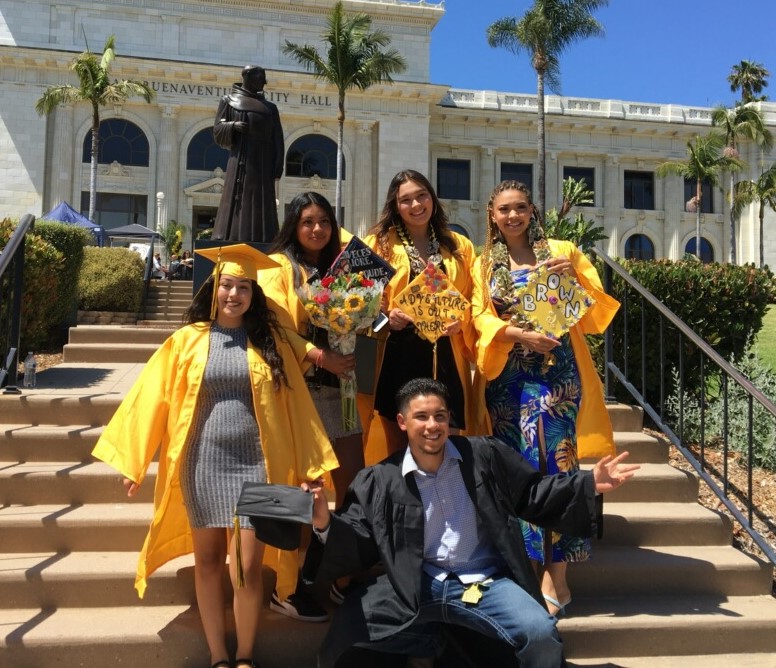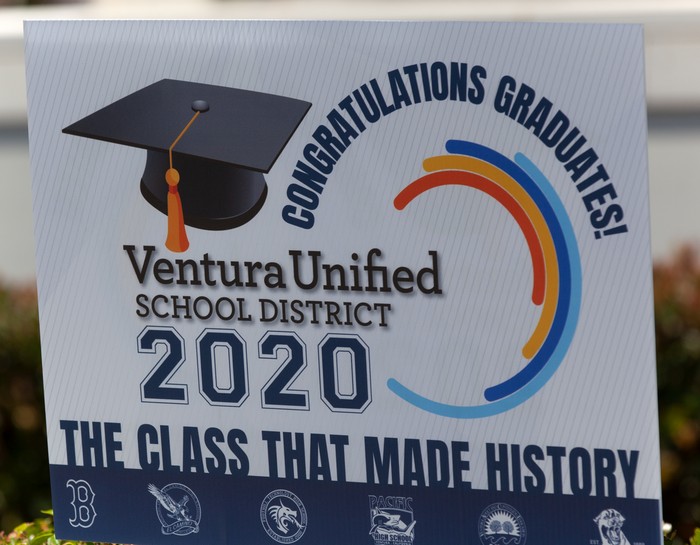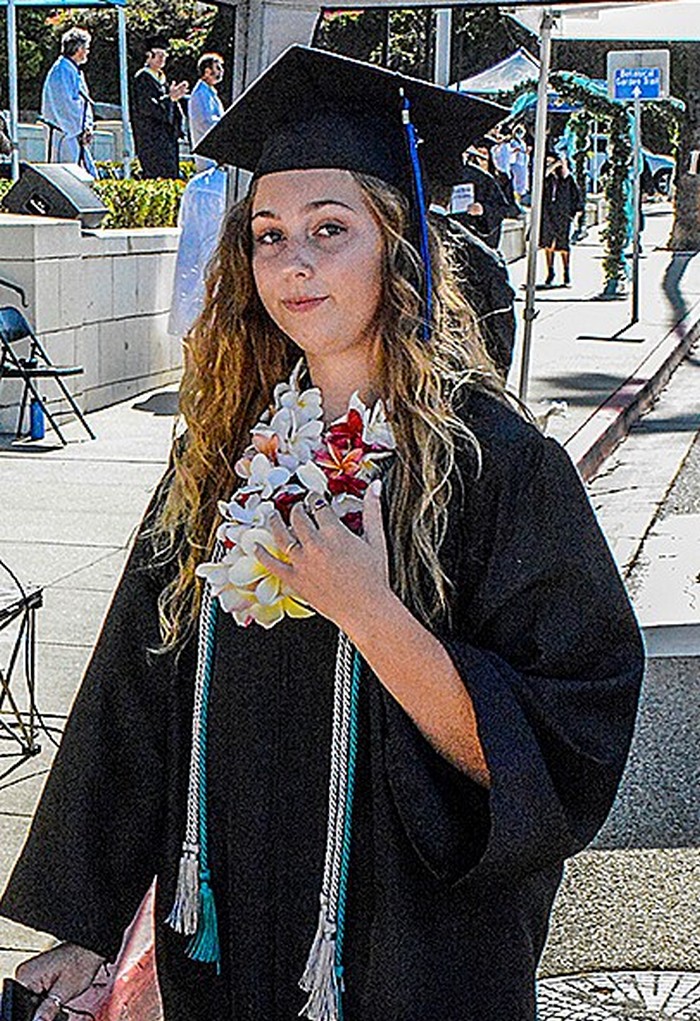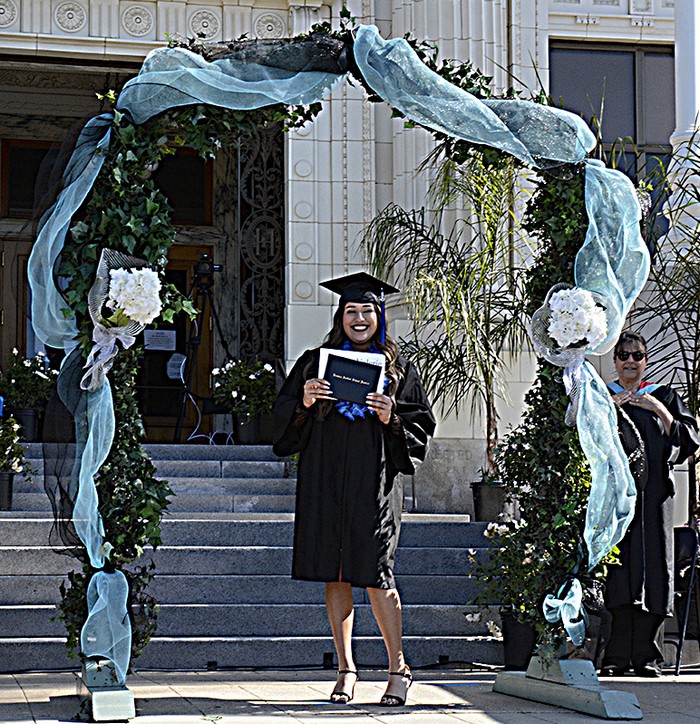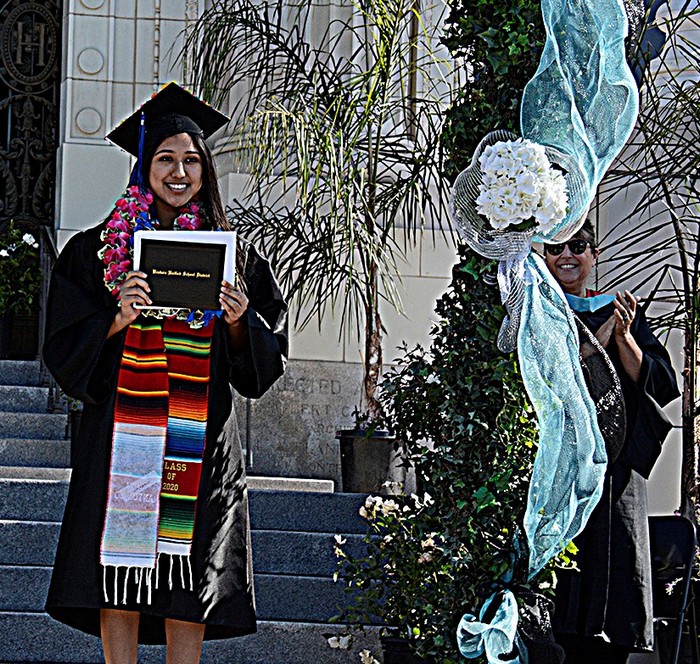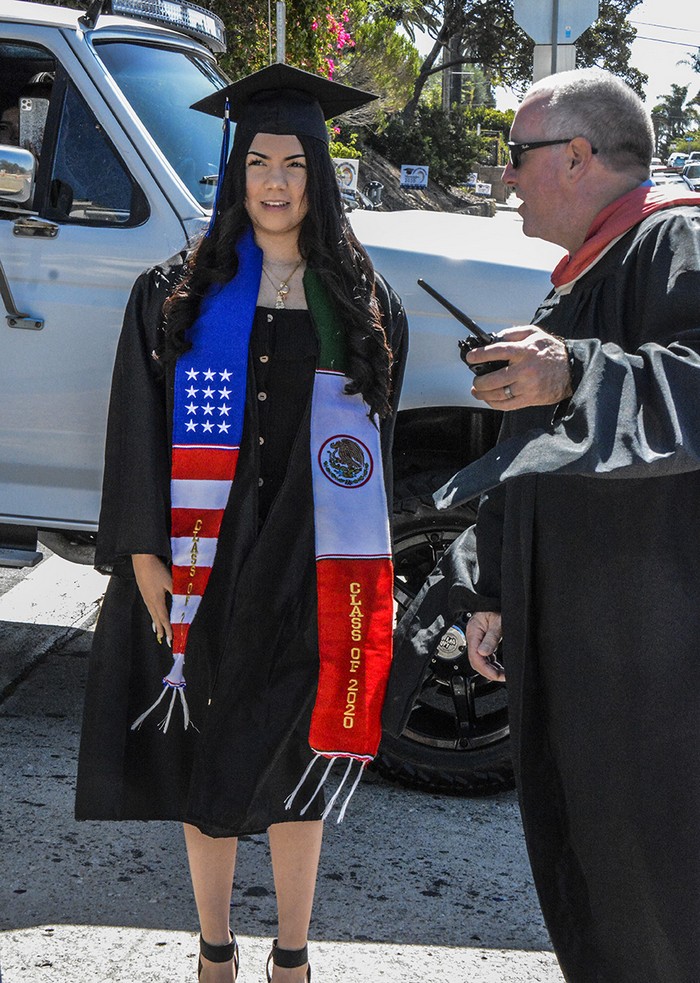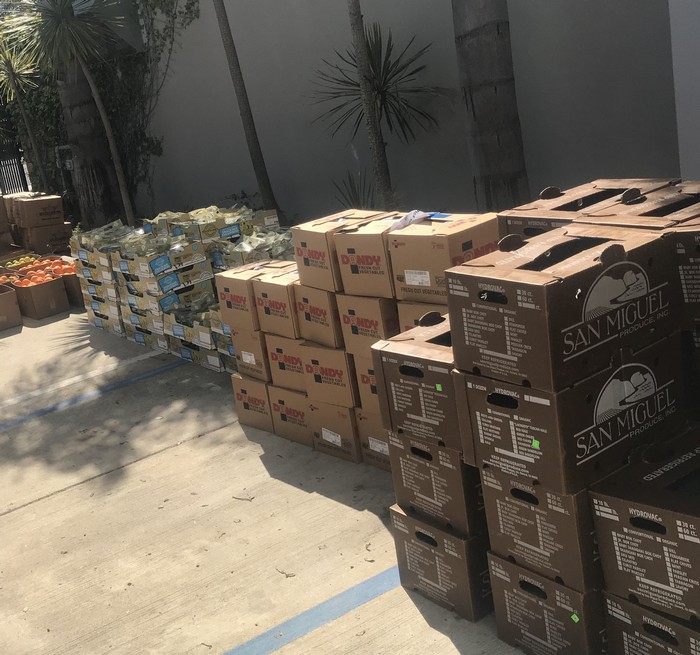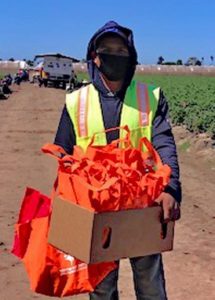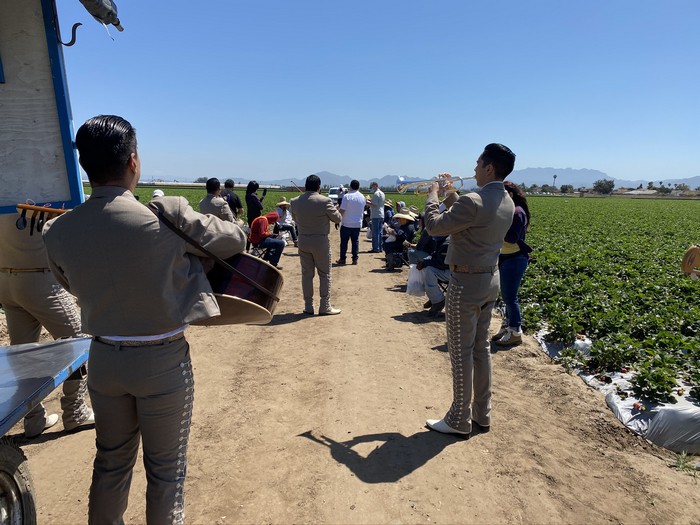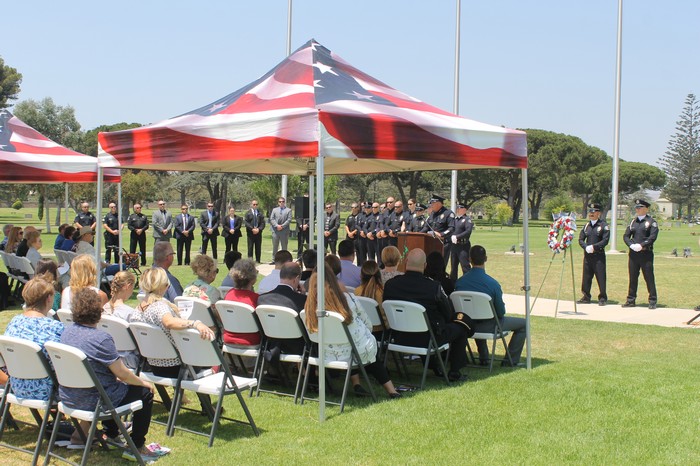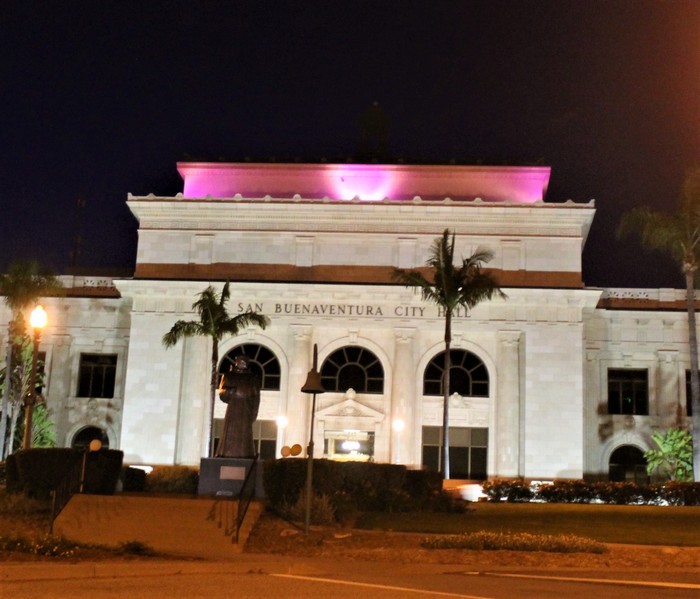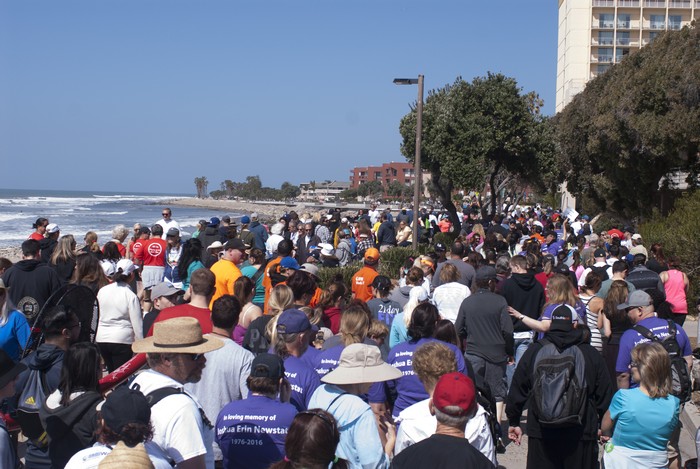Graduating students were all smiles.
by Sheli Ellsworth
Before COVID-19, the term “at-risk” was used to identify students that were having difficulty in school and at risk for dropping out. One out of ten California students will drop out of high school before graduating.
“Out of around 2000 students, we had about 60 students who were recognized by a counselor, teacher, parent or coach as having lots of potential but who were either struggling, underperforming academically, economically, socially, or attendance wise,” says Ventura High School Principal Carlos Cohen. Cohen contacted the Police Activities League (PAL) with an idea. He wanted to bridge any gaps students might have faced in their lives by coaching, mentoring and teaching them the skills they need to get ahead. In April 2019, a joint project Levin named “Learning the Ropes” or LTR was launched.
Students who normally would have been suspended for truancy, vaping, pot smoking or classroom violations had the choice of attending semi-monthly lunchtime workshops or suspension. “Freshman students in LTR also have access to a VHS Den Mentor—junior and senior students who have volunteered to mentor freshmen.” Thirty-five students decided to attend the LTR program. Only four students chose suspension.
PAL members Sal Flores, Ben Schuck, Jeanette Sanchez, Frank Benavidez, J.R. Luna, Joseph Hoss, Annette Garcia, and Lorelei Woerner took on the challenge. “About four or five of us went at a time, says Flores.” At first the students were really distracted, some were disrespectful, and some outright rude. Eventually, they started to listen.” Flores says the workshops focus on subjects like: Never Give Up; You Can Achieve Anything; Wealth and Happiness are Two Different Things; Goal Setting—Make a plan; Take 100% Responsibility for Your Actions; You Earn It—You’re Not Entitled to It; and What is the Real Problem?
Flores says that just showing up for the students is key and more than some working parents are able to do. “We care about them, we believe in them, and we make time for them—which is better than some students get at home.” Many Learning the Ropes students are from broken homes and blended families where alcohol and drugs interfere with normal functioning. “Some of the at-risk kids are just financially challenged and don’t know where to go next. We help them navigate their next step whether it be college or a trade school. We look for scholarships and sponsor field trips to postsecondary schools to get them comfortable with the idea of continuing their educations.” One of the most important lessons taught is: No more excuses! Today is the day to make changes.
On June 13, six of the nine LTR seniors graduated from Ventura High School. “Two more are making up credits this summer and will graduate in August,” according to Levin. One of the June graduates is Destiny Sausedo.
Sausedo grew up in a gang-infested neighborhood where shootings were commonplace. She has lived through the death of her brother in a drive-by shooting and the loss of her mother to a drug overdose. Eventually she landed in foster care then a group home. “I found the meetings motivational. I left with a new sense of purpose,” Sausedo says. She had no idea so many kids were dealing with so many problems. “Some of us needed help and didn’t even know it.” Sausedo advises other at-risk teens to never give up. “I have a saying: God picks the strongest soldiers for the toughest battles.” Sausedo’s next goal is to attend Ventura College and eventually become a therapist so she can help kids like her.
For more information about PAL and Ventura High School’s Learning the Ropes program contact Sal Flores 805.651.8647.
